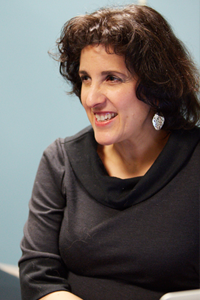Don't see what you're looking for?
Main Site
Berklee.eduCampuses and Schools

Photo by Kelly Davidson
Linda Balliro
For media inquiries, please contact Media Relations
- Instruments include, voice, and piano
- Over ten years performing as a classical singer in Europe, including church, concert, and opera in Central Europe
- Tour with the Hungarian Symphony Orchestra and chamber music ensemble featuring organ and two harps
- Appearances in the Wiener Festwochen
- Previously engaged by the Vienna Conservatory as voice faculty in the musical theater department
- Successful private teaching/consulting studio, working with local rock band singers, singer-songwriters, and vocalists involved in world music, musical theater, and opera
- B.M., New England Conservatory of Music, vocal performance
- Kodaly Pedagogical Institute of Music, Kecskemet, Hungary
- Certified by Seth Riggs in Speech Level Singing since 2007
"The first a foremost thing is that (my students) get a balanced voice so that they can move easily throughout their range and they don’t have to manipulate sound or manipulate their body to get out a particular note. Once they have (their range) accessible, we can go in any direction they want, so I work with them on the repertoire accordingly."
"My lessons are extremely structured. What I do that’s different from other (vocal instructors) is that I respond in the moment to what’s happening with the voice. I don’t have a preordained (problem) to deal with, but I do respond to whatever the issue is in the moment. When you work with a voice that way, you can fix problems very quickly."
"My lessons begin with training of the muscles. It’s not a warm-up, because the vocal muscles actually need very little time to warm up (they warm up in about a minute or two), but the exercises are designed to train the coordination between the muscles. There are a set of muscles that dominate the chest register (the lower notes) and a set that dominate the head voice (the higher notes). The trick of singing is to balance the coordination between these two sets of muscles. Once you have that balance you can do anything. When you don’t have that balance you have to compensate and use other extrinsic muscles to help you get the pitches that you want."
"I’d hope that students would come away with the ability to sing the full range of their voice without manipulating or cultivating a tone, so that they sound authentic and they have a wide range of choices for what to do when they sing a song."